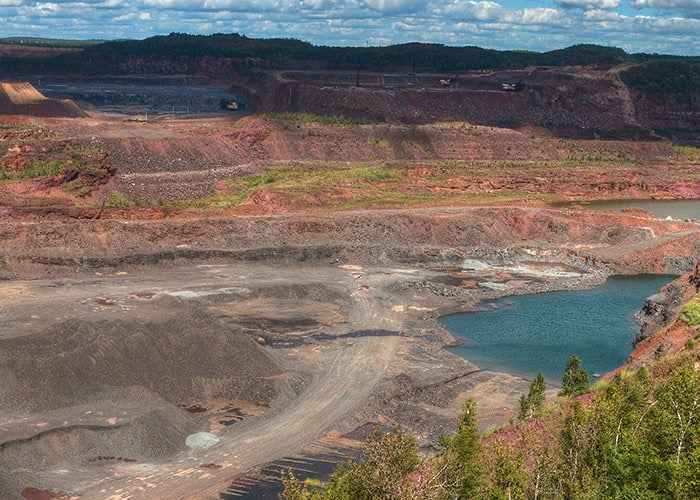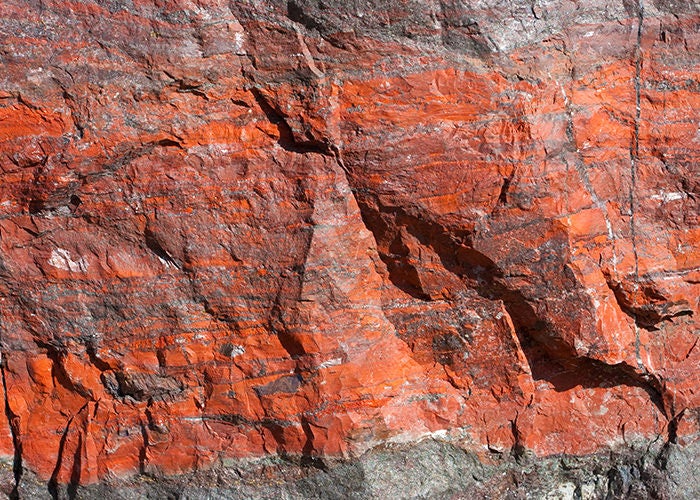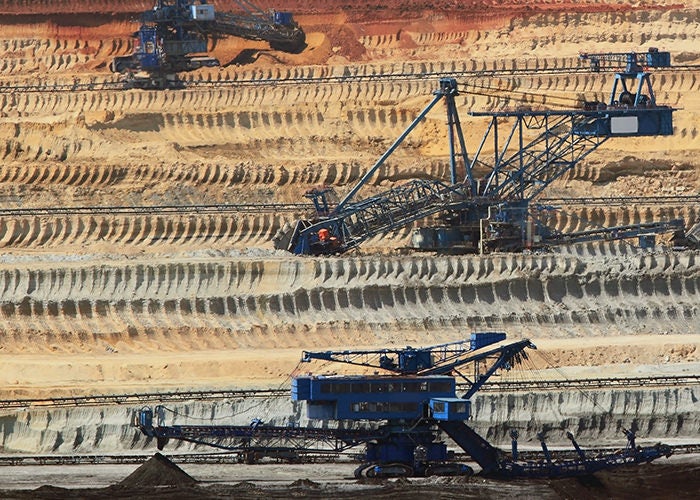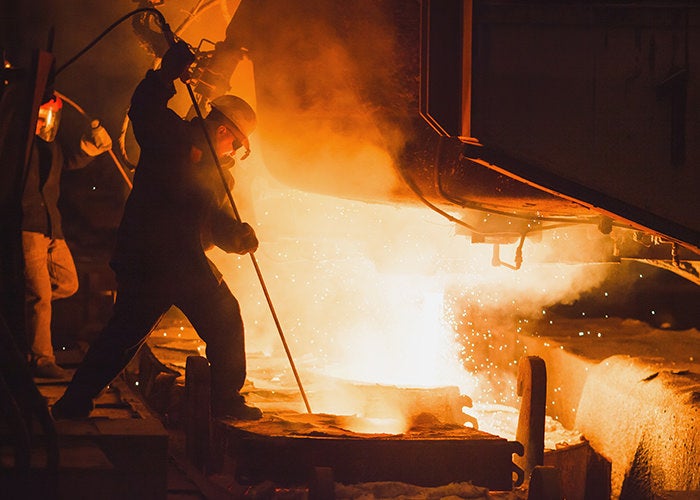Because steel can be endlessly recycled without affecting its strength, most of the steel used today started out as the steel used yesterday. But it all originated with iron ore, the core ingredient of steel.

Iron ore is a naturally occurring mineral substance found around the world. The United States is one of about 50 countries with iron ore mines. Nearly all of our iron ore comes from Lake Superior deposits, specifically the Mesabi Range in northern Minnesota.

Iron ore was formed during the middle Precambrian era, more than 1.8 billion years ago. When the world’s earliest organisms began releasing oxygen into iron-laden oceans, iron oxides formed and deposited on the sea floor. Today, those deposits are banded iron formations, or iron ranges.

When you hear the term “iron ore mine,” you probably imagine an underground cave of sorts. But the last U.S. underground iron ore mine closed in 1960, when the industry fully transitioned to open pits where soft ore can be drawn from the ground.

The domestic iron ore mining industry is experiencing a resurgence, thanks in part to growing demand for American-made steel. Plus, electric arc furnaces are producing increasingly complex steel products that can’t be made with alloyed scrap. As a result, iron ore mining efforts are currently expanding in Minnesota and Ohio.